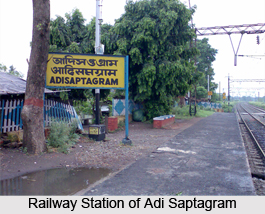 Saptagram which is also noted as Satgaon was a major port city in Bengal. It was flourished in the golden era of Bengal.
Saptagram which is also noted as Satgaon was a major port city in Bengal. It was flourished in the golden era of Bengal.
Location of Saptagram
Saptagram was the chief city located in the southern part of Bengal. It served as the commercial capital of Bengal, in ancient and medieval times, the location presently being in the Hooghly district in the Indian state of West Bengal.
History of Saptagram
Saptagram had dwindled to a group of insignificant huts in the 12th century. The port of Saptagram had to be abandoned because of the silting up and consequent drying of the Saraswati River.
Mythological Story behind Saptagram
Saptagram has a mythological story attached to the name. King Priyabanta of Kannauj had seven sons - Agnitra, Medhatithi, Bapusman, Jyotisman, Dutisman, Saban and Bhabya. They were not happy with the royal life and so they set out in search of a place where they could carry out their meditation. When they came to the confluence of the Ganges, Jamuna and Saraswati, they liked the place and settled down in seven villages to a hermit"s life. Thus grew Saptagram around the seven villages.
Geography of Saptagram
Saptagram is about 4 km from Bandel, a major rail junction. Saraswati River, which used to take off from Hooghly River at Tribeni, 50 km north of Kolkata, ran parallel to the Hooghly River on its west. Saraswati River started drying up from the 17th century and ships, which navigated up the river could no longer do so.
Villages in Saptagram
The word “Saptagram†means seven villages. These are identified as Bansberia, Kristapur, Basudebpur, Nityanandapur, Sibpur, Sambachora and Baladghati.
Decline of Saptagram
The silting of Ganga river was taking its toll. Adi Ganga or present Tolly"s Nullah was the outlet to the sea. The river was easily navigable for ocean-going ships up to Adi Ganga, beyond that only country boats operated. Betor another cultural city of Saptagram on the western bank of the river had come up as a roaring trading centre. Many traders had started shifting to Hooghly. The Seths and Basaks made their way to the eastern bank of the river, and set up the village of Gobindapur. It was much later that Job Charnock came and landed at Sutanuti. As the curtain wrung down over Saptagram, Kolkata started unfolding as a major metropolis.



















